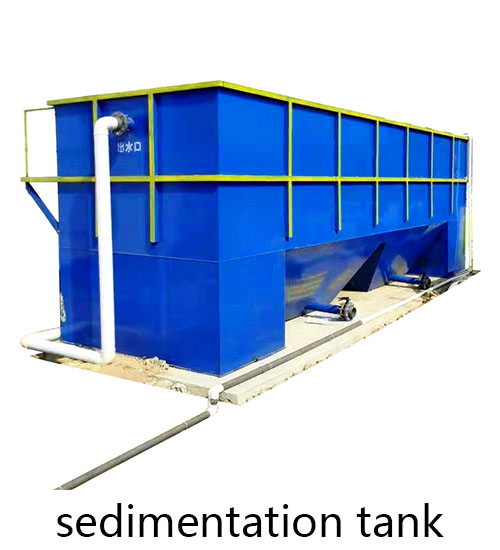(I)Membrane surface pollution and blockage
1. Organic pollution
Cause: A large amount of organic matter contained in wastewater, such as protein, oil, polysaccharide, etc., is adsorbed and deposited on the membrane surface to form an organic film. These organic substances have strong adhesion and are easy to combine with microbial metabolites, further aggravating the degree of blockage. For example, in the treatment of food processing wastewater, oil and protein in the wastewater tend to accumulate on the membrane surface, resulting in a decrease in membrane flux. According to relevant studies, when the oil content in food processing wastewater exceeds 100 mg/L and the protein content exceeds 200 mg/L, the membrane surface will show obvious organic pollution within 24-48 hours of operation, and the membrane flux can decrease by 20%-30%.
Influencing factors: The concentration, type, pH value and temperature of organic matter in wastewater will affect the degree of organic matter contamination on the membrane surface. Generally speaking, the higher the organic matter concentration and the closer the pH value is to the isoelectric point of substances such as proteins, the more likely it is to cause contamination; when the temperature is low, the activity of organic matter decreases and it is easier to deposit on the membrane surface. For example, under the condition of pH value of 4-6, the adsorption amount of protein on the membrane surface near the isoelectric point is about 30%-50% higher than that at pH value of 7.
2. Inorganic pollution
Cause**: The precipitation of inorganic salts in wastewater, such as calcium, magnesium, iron, silicon, etc., is the main cause of inorganic pollution. When the concentration of certain ions in wastewater exceeds its saturated solubility, a precipitation reaction will occur, forming a scale layer on the membrane surface. For example, in some hard water areas with high concentrations of calcium and magnesium ions, calcium carbonate scale deposition is prone to occur in the MBR system. When the calcium ion concentration in the wastewater reaches more than 200 mg/L, the magnesium ion concentration reaches more than 100 mg/L, and the pH value is greater than 8, the precipitation rate of calcium carbonate will increase significantly, and a thicker scale layer may form on the membrane surface in a short period of time, causing a sharp drop in membrane flux.
Influencing factors: The ion composition, pH value, temperature and hydraulic conditions of the wastewater will affect the precipitation of inorganic matter. For example, the increase in pH value will reduce the solubility of calcium carbonate, making it easier to form precipitation; when the water flow rate is low, inorganic particles have more time to deposit on the membrane surface. Studies have shown that when the water flow rate decreases from 1m/s to 0.1m/s, the deposition rate of calcium carbonate on the membrane surface will increase by about 5-10 times.
3. Pollution by microorganisms and their metabolites
Cause: Microorganisms in the MBR system will produce extracellular polymers (EPS) during their growth and metabolism. These EPS are sticky and absorbent and easily adhere to the membrane surface. In addition, the reproduction and death of microorganisms will also lead to the accumulation of substances such as cell fragments on the membrane surface. For example, in a long-term MBR system, the succession of microbial communities may cause certain microorganisms with strong EPS production capabilities to multiply in large numbers, thereby aggravating membrane pollution. According to research, in the MBR systems of some sewage treatment plants, the EPS content can reach 10-50 mg/L, of which protein and polysaccharide contents account for 40%-60% and 20%-40% of the total EPS, respectively. These EPS substances will form a thick biofilm on the membrane surface, resulting in a decrease in membrane flux.
Influencing factors: The nutrient content, dissolved oxygen level, temperature, and the types and number of microorganisms in wastewater will affect the production and accumulation of microorganisms and their metabolites. For example, wastewater with high nutrient levels is conducive to the growth and reproduction of microorganisms, which may lead to an increase in the production of EPS; when dissolved oxygen is insufficient, the metabolic pathways of microorganisms may change, producing more sticky substances. When the ratio of chemical oxygen demand (COD) to nitrogen and phosphorus in wastewater is greater than 200, microorganisms grow vigorously and the production of EPS is about 20% – 30% higher than under normal conditions.
(ii) Membrane pore blockage
1. Blockage by tiny particles and colloids
Cause: The tiny particles and colloids contained in the wastewater, such as silt, clay, algae, etc., have a small particle size and can easily enter the membrane pores through physical filtration, gradually blocking the membrane pores. These tiny particles and colloids may come from suspended matter in the raw water, microbial metabolites, and floccules produced during the wastewater treatment process. According to surveys, in some MBR systems with surface water as the water source, the part of the suspended matter in the water with a particle size of less than 2μm can account for 30% – 50% of the total suspended matter. These tiny particles can easily enter the membrane pores, causing the membrane pores to be blocked.
Influencing factors: The suspended solids concentration of wastewater, the properties of colloidal substances, and the size of membrane pores will affect the degree of blockage of tiny particles and colloidal substances. Generally speaking, the higher the concentration of suspended solids in wastewater and the worse the stability of colloidal substances, the easier it is for them to enter the membrane pores; the smaller the membrane pore size, the higher the risk of blockage. When the concentration of suspended solids in wastewater increases from 50mg/L to 200mg/L, the risk of membrane pore blockage will increase by about 3-5 times.
2. Blockage by biofilm growth
Cause: On the membrane surface and in the membrane pores, microorganisms will grow and form biofilms under suitable environmental conditions. The growth of biofilms will gradually occupy the membrane pore space, causing the membrane pores to be blocked. The formation of biofilms is closely related to factors such as nutrients, dissolved oxygen, and temperature in wastewater, and is also affected by the properties of the membrane surface. Studies have shown that under suitable temperature (20-30℃), dissolved oxygen (2-8mg/L) and nutrient conditions, the growth rate of microorganisms on the membrane surface can reach 0.1-0.3mm/d, and the thickness of the formed biofilm can reach tens of microns in a short time, seriously affecting the flux of the membrane.
Influencing factors: The organic matter concentration, dissolved oxygen level, temperature of the wastewater, and the hydrophilicity of the membrane will affect the growth rate and blockage degree of the biofilm. For example, when the organic matter concentration is high, the dissolved oxygen is sufficient, and the hydrophilicity of the membrane surface is poor, the biofilm is more likely to grow and block the membrane pores. When the COD concentration in the wastewater exceeds 500 mg/L, the dissolved oxygen content is 4-6 mg/L, and the contact angle of the membrane surface is greater than 90° (poor hydrophilicity), the growth rate of the biofilm is about 40%-60% higher than under normal conditions.
(III) Bubble problem
The reasons for excessive foaming in MBR membrane pools include sludge expansion, active agents in the influent, excessive aeration, and excessive sludge load. Sludge expansion will cause the sludge volume to expand and form a lot of foam; the active agents in the influent are prone to form foam during the aeration process; excessive aeration will waste energy and produce a lot of bubbles; and excessive sludge load will affect the sludge settling performance and cause foaming.
(IV) Water quality issues
The reasons for the yellowing of the effluent from the MBR membrane pool include high ammonia nitrogen content in the effluent, high metal ion content, and the inability of the small molecule pigment membrane to be retained. Failure to thoroughly treat ammonia nitrogen will cause the effluent to appear yellow; metal ions such as iron ions, copper ions or chromium ions will cause the water to appear colored; small molecule pigment membranes are difficult to be effectively retained by the MBR membrane and are discharged with the effluent.

生化膜反应器14-1024x768.jpg)

生化膜反应器14-scaled.jpg)
生化膜反应器12-scaled.jpg)


